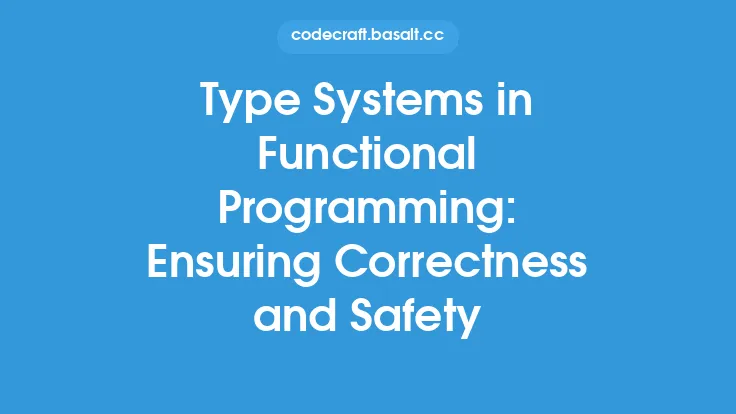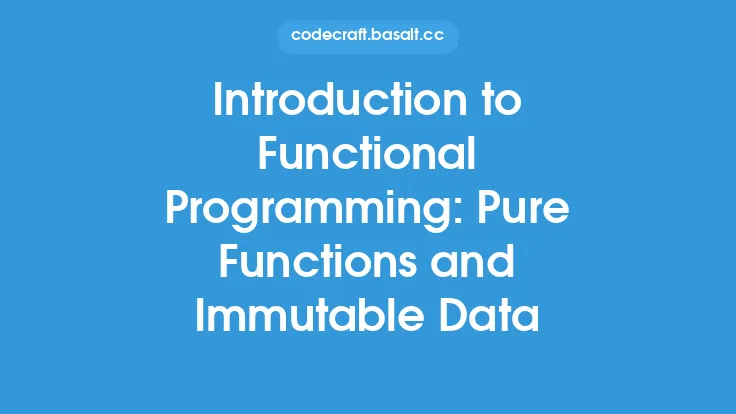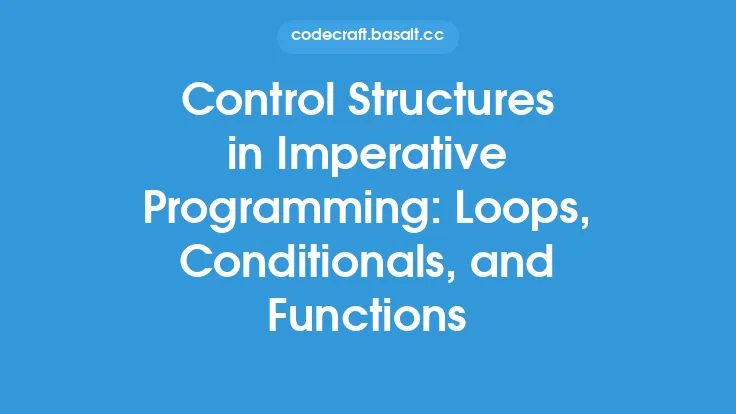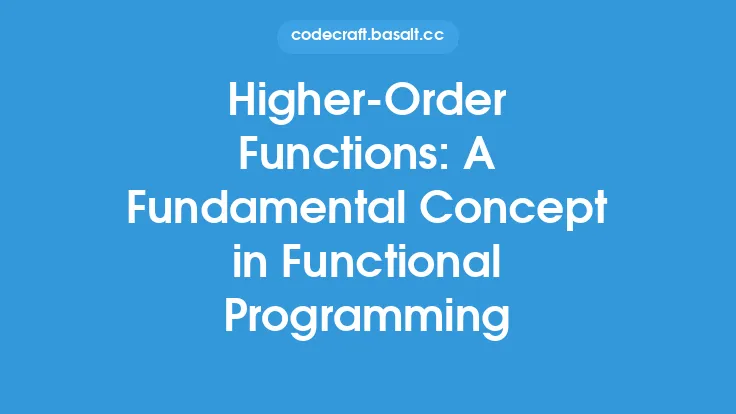Functional programming is a paradigm that emphasizes the use of pure functions, immutability, and the avoidance of changing state. One of the key aspects of functional programming is the way it handles data structures. In this article, we will explore the concept of lists, trees, and graphs in functional programming, and how they are used to solve real-world problems.
Introduction to Lists
Lists are a fundamental data structure in functional programming. They are a collection of elements that can be of any data type, including integers, strings, and other lists. Lists are typically implemented as linked lists, where each element points to the next element in the list. This allows for efficient insertion and deletion of elements at any position in the list. In functional programming, lists are often used to represent collections of data that need to be processed in a specific order. For example, a list of numbers can be used to represent a sequence of numbers that need to be processed in a specific order.
Trees
Trees are another important data structure in functional programming. A tree is a hierarchical data structure, where each node has a value and zero or more child nodes. Trees are often used to represent hierarchical relationships between data elements. For example, a file system can be represented as a tree, where each node represents a directory or file. In functional programming, trees are often used to solve problems that involve hierarchical relationships between data elements. For example, a tree can be used to represent a parse tree for a programming language, where each node represents a construct in the language.
Graphs
Graphs are a more general data structure than trees, where each node can have any number of edges connecting it to other nodes. Graphs are often used to represent relationships between data elements that are not necessarily hierarchical. For example, a social network can be represented as a graph, where each node represents a person and each edge represents a friendship between two people. In functional programming, graphs are often used to solve problems that involve complex relationships between data elements. For example, a graph can be used to represent a network of computers, where each node represents a computer and each edge represents a connection between two computers.
Operations on Lists
In functional programming, lists are often manipulated using a set of standard operations. These operations include map, filter, and reduce. The map operation applies a function to each element of a list, returning a new list with the results. The filter operation returns a new list containing only the elements that satisfy a given predicate. The reduce operation applies a function to each element of a list, accumulating a result. For example, the reduce operation can be used to sum up all the elements of a list.
Operations on Trees
Trees are often manipulated using recursive functions, where each node is processed recursively. For example, a function can be defined to traverse a tree, processing each node in a specific order. Trees can also be manipulated using higher-order functions, where a function is passed as an argument to another function. For example, a function can be defined to map a function over a tree, applying the function to each node.
Operations on Graphs
Graphs are often manipulated using graph algorithms, such as depth-first search and breadth-first search. These algorithms are used to traverse a graph, visiting each node in a specific order. Graphs can also be manipulated using higher-order functions, where a function is passed as an argument to another function. For example, a function can be defined to map a function over a graph, applying the function to each node.
Implementing Lists, Trees, and Graphs
In functional programming, lists, trees, and graphs are often implemented using recursive data structures. For example, a list can be implemented as a recursive data structure, where each element points to the next element in the list. Trees and graphs can also be implemented using recursive data structures, where each node points to its child nodes. These data structures can be implemented in a variety of programming languages, including Haskell, Lisp, and Scala.
Advantages of Functional Data Structures
Functional data structures have several advantages over imperative data structures. One of the main advantages is that they are immutable, which means that they cannot be changed once they are created. This makes them thread-safe and easier to reason about. Functional data structures are also often more composable than imperative data structures, which means that they can be combined in a variety of ways to solve complex problems.
Conclusion
In conclusion, lists, trees, and graphs are fundamental data structures in functional programming. They are used to represent collections of data that need to be processed in a specific order, hierarchical relationships between data elements, and complex relationships between data elements. These data structures are often manipulated using standard operations, such as map, filter, and reduce, and are implemented using recursive data structures. The advantages of functional data structures include immutability, thread-safety, and composability. By using functional data structures, programmers can write more efficient, scalable, and maintainable code.





